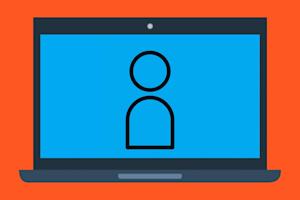In the rapidly evolving digital landscape, the need to protect sensitive data and manage user access effectively has never been more critical. IAM is a framework of policies and technologies that ensures the right individuals access the appropriate resources at the right times for the right reasons. As cyber threats become increasingly sophisticated, implementing a robust IAM system is essential for organizations aiming to safeguard their information assets, ensure regulatory compliance, and enhance operational efficiency.
IAM encompasses a range of components and technologies designed to manage digital identities and control access to corporate resources. These systems are crucial for verifying user identities, managing permissions, and monitoring user activities.
This comprehensive guide explores the intricacies of IAM, covering its core components, benefits, technologies, and best practices. We will also address common challenges organizations face when implementing IAM.
Whether you're new to IAM or looking to enhance your existing framework, this guide will provide valuable insights to help you navigate the complexities of identity and access management.
What is IAM?
Identity and Access Management (IAM) is a critical framework of policies and technologies designed to manage digital identities and regulate user access within an organization. IAM systems ensure that the right individuals access the appropriate resources at the right times, which is vital for maintaining security, compliance, and operational efficiency.
5 Core Components of IAM
Implementing a robust IAM framework involves several essential components that work together to ensure secure and efficient access control. Here are the five core components of IAM:
Identity Governance and Administration (IGA): IGA encompasses the policies and processes for creating, managing, and deleting user identities. It ensures that user identities are accurate, up-to-date, and securely managed throughout their lifecycle. IGA also includes role management and compliance reporting to align with organizational policies and regulatory requirements.
Access Management: Access management focuses on controlling user access to resources. This includes defining access policies, granting permissions based on user roles, and enforcing access controls. Access management ensures that users have the appropriate level of access to perform their duties while preventing unauthorized access to sensitive information.
Authentication: Authentication verifies the identity of users attempting to access systems. It includes various methods such as passwords, biometrics, multi-factor authentication (MFA), and single sign-on (SSO). Effective authentication mechanisms ensure that only legitimate users can access the system.
Authorization: Authorization determines what an authenticated user is allowed to do within a system. It involves assigning permissions and roles to users, ensuring they can access only the resources necessary for their roles. Authorization policies help prevent privilege escalation and unauthorized access to critical data.
Monitoring and Auditing: Continuous monitoring and auditing of user activities are crucial for detecting and responding to security incidents. IAM systems track user actions, access patterns, and anomalies to identify potential threats. Detailed logs and reports support compliance with regulatory requirements and provide insights for improving security measures.
These core components of IAM work together to create a comprehensive framework that protects organizational resources, ensures regulatory compliance, and enhances overall security and operational efficiency.
Advantages of Implementing the IAM Framework
Implementing an IAM framework offers several significant benefits for organizations, enhancing security, compliance, and operational efficiency. Here are some of the key advantages:
Enhanced Security: IAM systems ensure that only authorized users have access to sensitive information and resources, reducing the risk of data breaches and unauthorized access. By implementing robust authentication and authorization mechanisms, IAM frameworks safeguard against internal and external threats.
Regulatory Compliance: Many industries are subject to strict regulatory requirements regarding data protection and privacy. IAM helps organizations comply with these regulations by providing detailed access logs, reporting capabilities, and stringent access controls. This simplifies audits and demonstrates adherence to standards like GDPR, HIPAA, and PCI DSS.
Operational Efficiency: IAM automates and streamlines identity and access management processes, reducing the administrative burden on IT teams. Automated provisioning and de-provisioning of user accounts, role-based access control, and self-service password management improve productivity and reduce downtime.
Improved User Experience: IAM solutions enhance user experience by providing SSO capabilities, allowing users to access multiple applications with a single set of credentials. This reduces the need for multiple logins and passwords, simplifying the user experience while maintaining security.
Risk Mitigation: By continuously monitoring user activities and access patterns, IAM systems can detect and respond to suspicious behavior in real-time. This proactive approach helps mitigate risks associated with compromised accounts, insider threats, and other security incidents.
Scalability: As organizations grow, managing user identities and access permissions becomes increasingly complex. IAM frameworks are designed to scale with the organization, accommodating new users, applications, and resources without compromising security or efficiency.
Implementing an IAM framework not only fortifies an organization’s security posture but also drives compliance, operational excellence, and user satisfaction. These advantages make IAM an indispensable component of modern IT infrastructure.
Understanding IAM: Technologies and Best Practices
IAM relies on a combination of technologies and best practices to secure and manage digital identities effectively.
Technologies
Directory Services: Centralized databases that store user identities and attributes. Examples include Active Directory and LDAP.
Single Sign-On (SSO): Enables users to access multiple applications with one set of credentials, enhancing user convenience and security.
Multi-Factor Authentication (MFA): Requires users to provide multiple forms of verification before accessing resources, adding an extra layer of security.
Federated Identity Management: Allows users from different organizations to use their local credentials to access resources in other organizations, facilitating collaboration and reducing the need for multiple accounts.
Provisioning and De-Provisioning: Automates the process of creating, updating, and deleting user accounts across multiple systems and applications.
Best Practices
Least Privilege Principle: Grant users the minimum level of access necessary to perform their job functions, reducing the risk of unauthorized access.
Regular Audits and Reviews: Conduct periodic reviews of user access and permissions to ensure compliance and identify potential security gaps.
Strong Password Policies: Enforce the use of complex passwords and regular password changes to enhance security.
User Education and Awareness: Train users on the importance of IAM and best practices for maintaining secure identities and access.
Incident Response Planning: Develop and regularly update an incident response plan to address potential security breaches involving user identities.
Integration with Security Information and Event Management (SIEM): Incorporate IAM data into SIEM systems for comprehensive monitoring and threat detection.
Addressing Common Challenges in Identity and Access Management
Implementing and maintaining an effective Identity and Access Management (IAM) framework can be complex. Here are some common challenges organizations face and strategies to address them:
Integration with Existing Systems: Integrating IAM with legacy systems and diverse applications can be difficult. Choose IAM solutions that support various protocols and offer robust APIs for seamless integration.
User Experience: Balancing security with user convenience can be tricky. Implement Single Sign-On (SSO) and Multi-Factor Authentication (MFA) to enhance security while maintaining ease of use.
Scalability: Scaling IAM solutions to accommodate growth and changing business needs. Opt for scalable IAM solutions that can easily adapt to increasing numbers of users and applications.
Compliance: To meet regulatory requirements across different regions and industries, implement IAM solutions with comprehensive reporting and audit capabilities to ensure compliance with regulations such as GDPR, HIPAA, and PCI DSS.
Access Provisioning and De-Provisioning: Automate provisioning and de-provisioning processes to ensure timely and accurate access management.
Monitoring and Incident Response: Continuously monitoring access and responding to security incidents in real-time can be difficult. Integrate IAM with Security Information and Event Management (SIEM) systems for enhanced monitoring and incident response capabilities.
Role Management: Defining and managing roles and permissions accurately is a challenge. Regularly review and update roles and access policies to align with organizational changes and security requirements.
By proactively addressing these challenges with the right strategies and technologies, organizations can enhance the effectiveness of their IAM frameworks, ensuring secure and efficient identity and access management.
Why Choose Splashtop Secure Workspace?
Splashtop Secure Workspace is a secure access platform designed to protect digital identities and manage user access across various environments. It features advanced credential security, automated credential management, and zero-touch provisioning. The platform integrates just-in-time (JIT) and on-demand access, providing secure internet access with advanced threat protection. Additionally, Splashtop Secure Workspace offers comprehensive monitoring and telemetry to enhance both security and user experience.
Splashtop Secure Workspace not only strengthens your IAM strategy but also enhances overall security and operational efficiency. It is an excellent choice for organizations seeking enhanced security and streamlined access management. Here’s why Splashtop Secure Workspace stands out:
Advanced Security: Splashtop Secure Workspace provides robust security features, including encrypted connections, secure access controls, and continuous monitoring to protect against unauthorized access and cyber threats.
Scalability: The platform is designed to grow with your organization, accommodating an increasing number of users and applications without compromising performance or security.
User-Friendly: With an intuitive interface and seamless integration capabilities, Splashtop Secure Workspace ensures a smooth user experience, minimizing disruptions and enhancing productivity.
Comprehensive Monitoring: Continuous monitoring and detailed reporting provide visibility into user activities, helping to detect anomalies and ensure compliance with regulatory requirements.
Integration with Existing Systems: Splashtop Secure Workspace supports a wide range of protocols and offers robust APIs, enabling easy integration with existing IT infrastructure and legacy systems.
Cost-Effective: By consolidating multiple security and access management functions into a single platform, Splashtop Secure Workspace offers a cost-effective solution that reduces the need for multiple disparate systems.
To experience the benefits of Splashtop Secure Workspace firsthand, sign up for a free trial today and take the first step towards a more secure and efficient access management solution.





